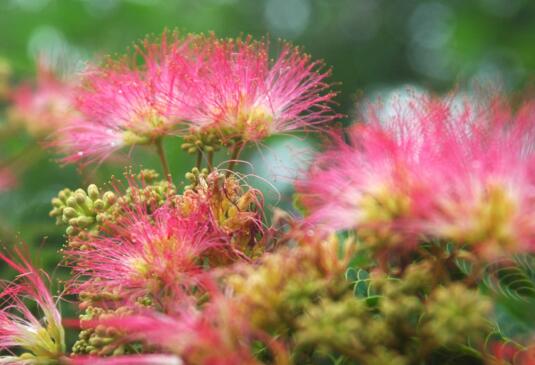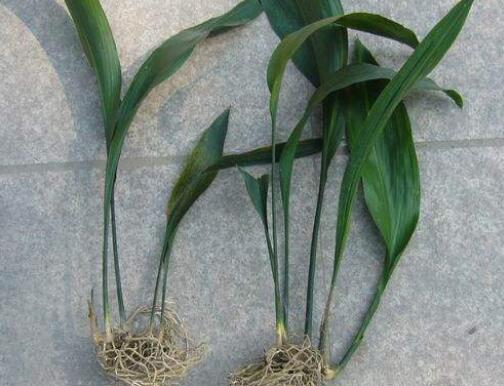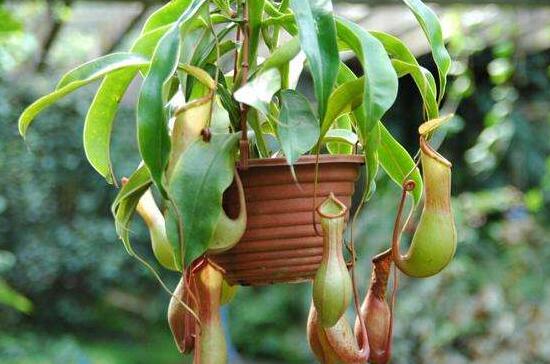How to breed albizia flower, how to breed albizia flower/sowing propagation/cutting propagation
Albizzia is a kind of highly ornamental flower plant, which is cultivated in many areas of our country. With more and more people raising it, people are more concerned about its reproduction. How to reproduce it? What are the breeding methods of albizzia officinalis? Next, the editor will take you to learn about it.
First, how to reproduce the albizzia

II. Propagation methods of Albizia mandshurica
Sowing and reproduction
1. Soil selection
Among the propagation methods of albizzia, sowing and reproduction is a more commonly used one. Before sowing, we first need to choose soil. In terms of soil, we can choose sandy soil with high degree of looseness, which has better drainage. It can make the albizzia flower better absorb nutrients.
two。 Seed treatment
The seeds of albizzia are generally harvested in May-June every year, and we still need to deal with the seeds before they can be sowed after harvest, otherwise the germination rate is very low. first of all, we need to soak the seeds in hot water for a day. Then put the seeds in the greenhouse to promote release, wait until the seeds are white, you can sow.
3. Sowing method
As for how to sow the albizzia flower, the method is actually very simple, because the seeds of the albizzia flower are relatively small, so we need to mix the seeds and fine sand for sowing, and after sowing, we can cover them with about 2m of soil for watering. Once watering, it can be thoroughly watered, and then it can germinate in 7-10 days.
Cuttage propagation
1. Cuttings selection
Among the propagation methods of albizzia, cutting propagation is a relatively simple method. Before cutting, we first need to select the cuttings, that is, the branches of the acacia flower. Generally speaking, it is best to choose the branches with stronger growth, so that the survival rate will be higher.
two。 Cutting method
After selecting the cuttings, we can carry on the cutting. about how to cut the albizzia flower, the method is very simple. first of all, we need to use a chopstick to cut a hole in the soil, and then insert the cuttings into the hole to flatten the soil and water it. After watering, the cuttings can basically take root about 15-20 days after watering.
How do longevity flowers reproduce? Longevity flowers can be propagated by sowing and cutting, but mainly by branch propagation. The cuttings are carried out after flowering in spring or autumn, and the cuttings are selected to grow sturdy shoots, cut off the lower leaves, shade and maintain high air humidity. The suitable temperature for rooting of longevity flower cuttings is 20 ℃, which usually takes 10 to 15 days to take root. 2-3 weeks after rooting, 2-3 plants were planted in each pot.
The latest information
Cultivation and Management of Alsophila spinulosa in different places eight steps of Paeonia lactiflora cultivation
Pot management of pineapple
Occurrence and control of albizzia jidingensis
Calliandra haematocephala Chart of Chrysanthemum tasseled: how to grow and propagate Chrysanthemum Calliandra haematocephala alias: Leucaena, American, Red Velvet Ball Classification: herbaceous Flowers Genus: dicotyledonous plants of the phylum Rosaceae in full bloom: autumn Chrysanthemum (scientific name: Calliandra haematocephala) Leguminosae, deciduous shrubs or small trees; branches expand, branchlets brown, rough. Stipules ovate-lanceolate, persistent. Inflorescences axillary, with about 25-40 flowers, pedicels 1-3.5 cm long; calyx green; Corolla purplish red, apical lobes glabrous; stamens protruding outside the Corolla, stamens white, with subulate appendages in the orifice, upper free filaments crimson. Pods linear-oblanceolate, dark brown, dehiscing along sutures from top to base at maturity, petals retrorse; seeds oblong, brown. Flowers. Introduction of Calliandra haematocephala (scientific name: Rhus) Leguminosae or deciduous shrubs or small trees; the branches are expanded and the branchlets are brown and rough. Stipules ovate-lanceolate, persistent. Inflorescences axillary, with about 25-40 flowers, pedicels 1-3.5 cm long; calyx green; Corolla purplish red, apical lobes glabrous; stamens protruding outside the Corolla, stamens white, with subulate appendages in the orifice, upper free filaments crimson. Pods linear-oblanceolate, dark brown, dehiscing along sutures from top to base at maturity, petals retrorse; seeds oblong, brown. Flowering from August to September and fruiting from October to November. Taiwan, Fujian and Guangdong have been introduced and cultivated for ornamental purposes. Native to South America, it is often cultivated in tropical and subtropical regions. The flowers are extremely beautiful. The shape of a deciduous shrub or small tree, 1-3 m tall; branches extended, branchlets Terete, brown, rough. Stipules ovate-lanceolate, persistent. Leaves bipinnately compound, total petiole 1-2.5 cm long; pinnae 1 pair, 8-13 cm long; leaflets 7-9 pairs, obliquely lanceolate, 2-4 cm long and 7-15 mm wide, middle and upper leaflets larger, lower ones smaller, apex obtuse and apiculate, base oblique, margin sparsely pilose; midvein slightly upper margin; petiolule only 1 mm long. The head of the flower is axillary, about 3 cm in diameter, with about 25-40 flowers and a total pedicel 1-3.5 cm long; Calyx campanulate, ca. 2 mm, green; Corolla tube 3.5-5 mm long, lavender red, apical with 5 lobes, lobes reflexed, ca. 3 mm, glabrous. Stamens protruding outside the Corolla, very conspicuous, stamen tube about 6 mm long, white, with subulate appendages in the mouth, upper free filaments about 2 cm long, crimson. The flowering period of Zhu tasseled flower is from August to September. Fruit tassel pods linear-oblanceolate, 6-11 cm long, 5-13 mm wide, dark brown, dehiscing along sutures from top to base at maturity, petals retrorse; seeds 5-6, oblong, 7-10 mm long, ca. 4 mm wide, brown. The fruiting period of Zhu tasseled flower is from October to November. The ecological habits of Zhu tasseled flowers are tropical flowers, which prefer warm, moist and sunny environment, are not cold-resistant, and require deep soil layer and good drainage. Zhu Ying flowers like light, like warm and humid climate, suitable for growing in deep, fertile and well-drained acidic soil. The cultivation techniques of Phyllostachys angustifolia need more water, and attention should be paid to irrigation during the growing period. Potted plants are prone to drought and water shortage, and the leaves are wilted, so attention should be paid to replenishing water. Fertilization can be applied with natural organic fertilizer or compound fertilizer, once a month, more phosphorus and potash fertilizer during flowering. The sunshine in the planting place should be sufficient, and the flowering in the hidden place is poor. When the trunk of young trees is more than 2 meters high, fixed trunk pruning can be carried out. Select the three side branches scattered up and down as the main branches and use it to expand the crown. In winter, three main branches are cut short, and several lateral branches are cultivated on each main branch, which are scattered with each other, each occupying a certain amount of space. When the crown expands too far and the lower part is bald, it is necessary to retract and change the head in time to cut off the dead branches. Cutting propagation of Zhu tasseled flowers is generally used for cutting propagation. Robust branches with a length of 20 cm can be cut in spring, and the cutting bed temperature should be kept at 15-28 ℃. Cutting cuttings should be cut 1-2-year-old branches without aging and full tissue, each section is about 15~500px, planted in a wet sand bed, shading or full-light spray. The seeds were sown and reproduced in October, and the seeds were dried and stored until the following spring. Before sowing, the seeds were soaked in 60 ℃ hot water and changed water once a day. On the third day, they were taken out to moisturize and germinate for a week, and germinated 5-7 days after sowing. Prune the lateral branches in time during the seedling period to ensure that the trunk is straight. Transplanting should be carried out before budding, but when transplanting big trees, brackets should be set up to prevent them from being blown down by the wind. In winter, ditches were opened around the trunk and fertilized once. The main disease control of Phyllostachys praecox is canker. The prevention and control method can be sprayed with 50% antiseptic 800 times solution. Pest control is harmful to longicorn beetles and planthoppers. The control method was to kill longicorn beetles with kerosene 1kg and 80% dichlorvos EC 50 g, and wood lice to be sprayed with 1500 times of 40% dimethoate EC. In the distribution area of Zhu tasseled flower, it has been introduced and cultivated for ornamental use in Taiwan, Fujian and Guangdong. Zhu tassel is native to South America and is often cultivated in tropical and subtropical regions. The flower is beautiful and slightly fragrant, with long flowering period and fast growth. It is a good ornamental and nectar plant. It is widely cultivated in tropical and subtropical areas. The wood is hard and can be used as a farm tool; the bark contains tannin; the root bark is fried with water to treat indigestion; flower buds, tender leaves and young fruits are edible. The application of flower beauty, shaped like a fluffy ball, is fragrant; Ye Qi, which closes at sunset and opens at sunrise, gives people a symbol of friendship. The flowers and leaves are clear and strange, and the shade is like an umbrella, planted in front of the hall for viewing. It is excellent to be shade trees, street trees, or planted by the garden pool. Because of its bright flowers and colors, Zhu tassel is an excellent ornamental tree species, which is suitable for planting in garden and green space. Zhu Ying has bright green leaves, bright red and ball-like flowers, which is very lovely. It is a kind of flower shrub with high ornamental value, and there are many varieties of horticultural flowers. Feasible pot planting and park greening arrangement, growing well in the greenhouse in Shanghai area. The tree shape is graceful, the leaf shape is elegant, the midsummer velvet flower is full of trees, colored and fragrant, can form a gentle and comfortable atmosphere, suitable for shade trees, street trees, planted in the forest edge, in front of the house, lawn, hillside and other places. It is an ornamental tree with street trees, shade trees, greening on all sides and gardens. Albizia tree crown open, summer shade quiet, pinnate compound leaves open day and night, very strange, summer pink velvet flowers, very beautiful, suitable for poolside, waterfront, riverbank and stream and other places scattered. The flower language and symbolic meaning of Zhu tasseled flowers: unrestrained, heroic and festive. Pictures of Zhu tasseled flowers
- Prev

How to propagate one-leaf orchid, propagation methods / post-breeding maintenance skills of one-leaf orchid
One-leaf orchid is extremely shade-tolerant, which makes it the most popular indoor foliage plant. It is not only easy to grow, but also very simple to reproduce, so how can one-leaf orchid reproduce and survive easily? That is ramet. Let's learn more about the propagation method of planting one-leaf orchid.
- Next

How to propagate pitcher plants, three propagation methods / cuttings / striping / sowing
For pitcher plant, we should have heard that it is a mosquito repellent plant, potted by many people at home. With more and more people raising pitcher plants, it is also multiplied in large numbers, so how do pitcher plants reproduce? Buy plants or reproduce on your own, and there are three main propagation methods of pitcher plants: cutting, striping and sowing.
Related
- Fuxing push coffee new agricultural production and marketing class: lack of small-scale processing plants
- Jujube rice field leisure farm deep ploughing Yilan for five years to create a space for organic food and play
- Nongyu Farm-A trial of organic papaya for brave women with advanced technology
- Four points for attention in the prevention and control of diseases and insect pests of edible fungi
- How to add nutrient solution to Edible Fungi
- Is there any good way to control edible fungus mites?
- Open Inoculation Technology of Edible Fungi
- Is there any clever way to use fertilizer for edible fungus in winter?
- What agents are used to kill the pathogens of edible fungi in the mushroom shed?
- Rapid drying of Edible Fungi

